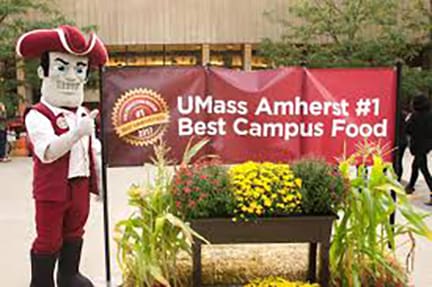LTI has been a longtime supporter of Foodservice Consultants Society International (FCSI) and its mission…
6 Ideas for the K-12 Foodservice Industry from UMass Dining

The K-12 learning environment is meant to prepare students for their college and university experience. To best prepare those students, K-12 schools will typically follow the trends set by colleges and universities. However, it’s not only the classroom curriculum, learning technologies and teaching methods of colleges that shape the K-12 experience. Colleges and universities have found that the food serving experience is also important to the success of a student. Because of this, some universities have begun encouraging K-12 schools to adopt some of their serving trends to help drive success in school and better prepare them for the next step in academics.
 Recently, more than 30 K-12 food service directors from all over the country came together for The Future of Dining in K-12 Symposium in Jacksonville, Florida. Garett DiStefano, director of residential and retail dining services at the University of Massachusetts (UMass) Amherst, was one of the many guest speakers. DiStefano shared with attendees the factors that make his university’s dining program what it is.
Recently, more than 30 K-12 food service directors from all over the country came together for The Future of Dining in K-12 Symposium in Jacksonville, Florida. Garett DiStefano, director of residential and retail dining services at the University of Massachusetts (UMass) Amherst, was one of the many guest speakers. DiStefano shared with attendees the factors that make his university’s dining program what it is.
A university of nearly 30,000 students UMass is one of the top campuses for dining in the entire country. In fact, last year Princeton Review named the university as the No. 1 campus in the country…for the fourth straight year.
During his presentation, DiStefano explained how primary education environments should consider duplicating some of these practices to enhance their foodservice programs and help prepare students for their next step in education.
1) Trends of the foodservice industry are well documented. Some may be more permanent than others. However, one that UMass finds value in is offering more customization and offering smaller portions. Three square meals is no longer the routine. Students are having five dining/snacking instances per day. Smaller portions help keep them satiated but are also quicker and more convenient.
2) Supporting students with specific diets is challenging. Whether students need allergen-free, gluten-free, vegan or vegetarian options, meeting the demands of students isn’t easy. But, if the institution can collaborate with its students, talk and listen to them, show them that their ideas are valid and be transparent with them, students with these needs can also be your dining program’s greatest advocates.
3) There is lots of scientific evidence on how food effects the body and mind. Offering “high-performance foods” is key to helping students eat healthier, but it also plays a huge role in their mental health and academic success. Consider the relation between high-performance foods and GPA found in this UMass Dining Living Laboratory study.
4) Part of what makes us develop throughout our time in college or university is our exposure to new people, new cultures and new ideas. To DiStefano and UMass, dining isn’t just about eating; it’s about storytelling. Exploring new types of cuisine can help open the mind. This is why patrons at UMass are routinely exposed to Italian, Mexican, Chinese, Indian, Korean, Caribbean and other diverse options.
5) When it comes to communicating, especially with younger generations, social media has become a key player in the UMass playbook. The ability to share videos and pictures of dining experiences is a tool to promote the dining program, give students a voice and increase collaboration between the school and its students.
6) To DiStefano, strong food and dining practices are more than a tool for enhancing performance at school. They also enhance everyday life. UMass is helping develop the dining practices of the four-year student but is also focused on preparing that student for post-school life. In a UMass survey of 2,653 respondents, 80% said they planned on continuing their dining habits practiced at UMass after graduating. With numbers like this, DiStefano and his team are set on helping those students practice good habits before moving on to the real world. However, it can start even earlier. If good dining habits are created during their time in K-12, students will be that much more prepared for the next step.
We want to thank Garett DiStefano for his time to come talk to us, as well as all those that participated in the symposium. To stay up to date on more upcoming events that LTI will be a part of, follow us on LinkedIn, and Facebook. For more information on the UMass Amherst dining program, visit www.umassdining.com.


